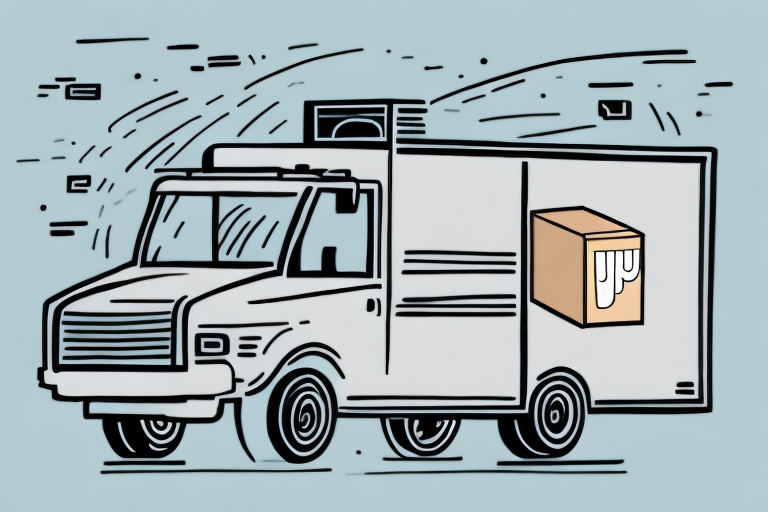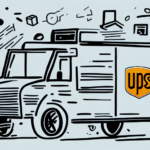Understanding UPS Liability Coverage for Your Business
If your business ships products or packages using UPS, understanding UPS Liability Coverage is essential. This coverage protects your business in the event of lost or damaged packages during shipping. In this article, we'll explore the details of UPS Liability Coverage, including its functionality, types of coverage available, and strategies to maximize your coverage effectively.
What is UPS Liability Coverage and How Does It Work?
UPS Liability Coverage is a form of protection that safeguards your business against financial losses due to lost or damaged packages during the shipping process with UPS. The coverage amount varies based on the shipment type and destination, and the cost is determined by the package's value and the coverage level chosen by the shipper.
In the event that a package is lost or damaged, UPS will attempt to locate and deliver it to the recipient. If unsuccessful, UPS Liability Coverage reimbursements are provided up to the selected coverage level. It's important to distinguish UPS Liability Coverage from shipping insurance, as the former offers limited coverage based on the chosen level, while shipping insurance can cover the full value of the package.
Moreover, UPS Liability Coverage excludes certain items such as cash, jewelry, and antiques. Reviewing UPS's terms and conditions is crucial to ensure your packages qualify for coverage.
Key Differences Between UPS Liability Coverage and Shipping Insurance
- Coverage Scope: UPS Liability Coverage covers up to a specified amount based on the shipment's declared value, whereas shipping insurance can cover the full value of the package.
- Included Items: UPS Liability Coverage excludes high-risk items like cash and jewelry, which may be covered under separate shipping insurance policies.
- Purchase Requirement: Shipping insurance is an additional policy that must be purchased separately, while UPS Liability Coverage is often included in the shipping cost based on declared value.
Types of UPS Liability Coverage
UPS offers two primary types of Liability Coverage for businesses: Declared Value Coverage and Exception Liability Coverage.
Declared Value Coverage
Declared Value Coverage is the standard protection provided by UPS Liability Coverage. It is based on the declared value of the package at the time of shipment, representing the maximum amount a shipper can recover if the package is lost or damaged during transit.
Exception Liability Coverage
Exception Liability Coverage offers enhanced protection against specific shipping anomalies, such as weather-related delays or disruptions. This coverage is available for an additional fee and complements the standard Declared Value Coverage by addressing unforeseen events.
It's important to note that UPS Liability Coverage operates as a contractual agreement rather than traditional insurance, making it subject to specific limitations and exclusions detailed in the UPS Tariff and Terms of Service.
Additional Insurance Options
For comprehensive protection, businesses may consider purchasing additional insurance through UPS or third-party providers. These insurance policies can cover a broader range of risks, including theft, improper packaging, and other unforeseen damages.
Benefits of UPS Liability Coverage for Businesses
UPS Liability Coverage offers multiple advantages to businesses, including:
- Financial Protection: Shields your business from financial losses due to lost or damaged shipments, preventing costly refunds or product replacements.
- Peace of Mind: Provides security when shipping valuable or sensitive items, allowing you to focus on core business operations.
- Customer Satisfaction: Helps maintain a positive reputation by ensuring quick resolution of shipping issues, thereby enhancing customer trust and loyalty.
What Does UPS Liability Coverage Protect Against?
UPS Liability Coverage primarily protects against:
- Lost Packages: Occurs when a package isn't delivered within the expected timeframe or cannot be located by UPS.
- Damaged Packages: Involves physical damage to the package during shipping.
However, it's important to note that this coverage does not protect against shipping delays or cover specific items like perishable goods and prohibited items. Always refer to UPS's official guidelines for detailed coverage information.
Determining the Right Amount of UPS Liability Coverage for Your Business
Selecting the appropriate level of UPS Liability Coverage depends on various factors:
Value of Shipped Items
Assess the monetary value of the items you regularly ship. High-value items require higher coverage levels to ensure adequate protection against potential losses.
Shipping Volume and Frequency
Businesses with high shipping volumes may benefit from higher coverage levels to mitigate the increased risk of lost or damaged packages. Regular review of your shipping patterns can inform the necessary coverage adjustments.
Potential Financial Impact
Consider the financial implications of losing or damaging packages. High-impact losses necessitate more comprehensive coverage to protect your business’s financial stability.
UPS offers tools like the Shipping Cost Calculator to help businesses determine the appropriate coverage levels and associated costs.
Filing a UPS Liability Claim: A Step-by-Step Guide
In the event of a lost or damaged package, follow these steps to file a UPS Liability Claim:
- Gather Necessary Information: Collect tracking numbers, package details, and proof of value.
- Initiate the Claim: File the claim online through the UPS website or contact UPS customer service directly.
- Provide Additional Documentation: Supply any requested information, such as photos of the damaged package or repair estimates.
- Claim Processing: UPS will review the claim and assess the eligibility based on the provided documentation.
- Receive Reimbursement: Upon approval, UPS will reimburse the declared value up to the selected coverage level.
Ensure that claims are filed within the stipulated timeframes—typically within nine months for domestic shipments and within 60 days for international shipments. Prompt filing enhances the likelihood of a successful claim.
Documentation Tips for Filing Claims
- Take clear photos of damaged packages and their contents.
- Keep all receipts, invoices, and proof of delivery.
- Maintain detailed records of the package contents and their values.
Common Mistakes to Avoid When Filing a UPS Liability Claim
Avoid these common pitfalls to ensure a smooth claims process:
- Incomplete Information: Failing to provide all necessary details, such as proof of value or accurate package information.
- Missed Deadlines: Not filing the claim within the required timeframe can result in denial.
- Poor Packaging: Improperly packaged items may lead to coverage exclusions.
- Incorrect Labeling: Mislabeling packages can cause delays and affect claim outcomes.
Properly documenting damage and ensuring all necessary information is submitted promptly can significantly improve the chances of a successful claim.
Maximizing Your UPS Liability Coverage
Implement these strategies to enhance the effectiveness of your UPS Liability Coverage:
- Follow Packaging Guidelines: Adhere to UPS’s packaging standards to minimize damage risks.
- Accurate Labeling: Ensure all packages are labeled correctly with accurate shipping information.
- Purchase Additional Coverage: Consider Exception Liability Coverage for added protection against unexpected disruptions.
- Track Shipments: Closely monitor packages and communicate with recipients to ensure timely delivery.
Additionally, maintain detailed documentation of package contents and regularly review your coverage levels to align with your evolving business needs. As your business grows, so should your protection strategies to address increased shipping risks.
Conclusion
UPS Liability Coverage is a valuable tool for businesses that rely on UPS for shipping products or packages. By understanding the different coverage types, selecting the appropriate coverage level, and following best practices for packaging and labeling, businesses can protect themselves against the financial repercussions of lost or damaged shipments.
Implementing effective claims procedures and maximizing coverage strategies not only safeguard your business but also enhance customer satisfaction and loyalty. Stay informed and proactive to ensure your shipping operations remain secure and efficient.








